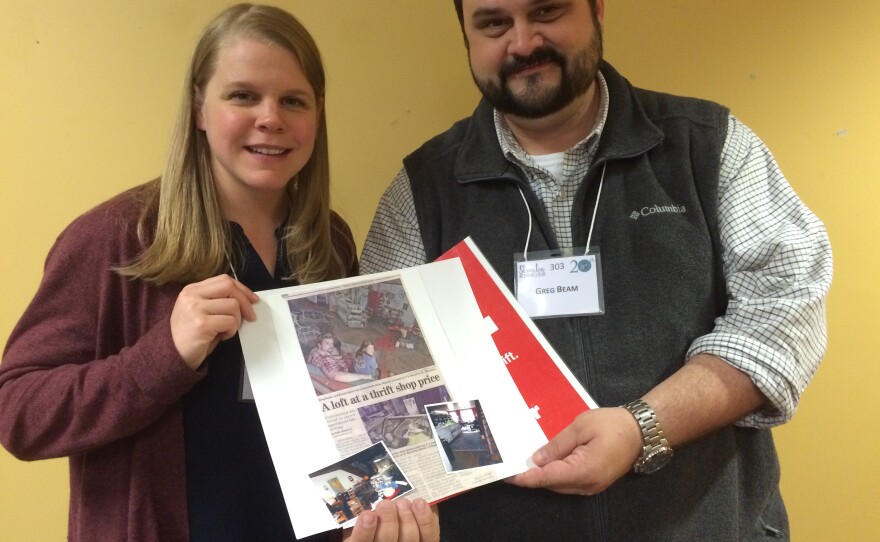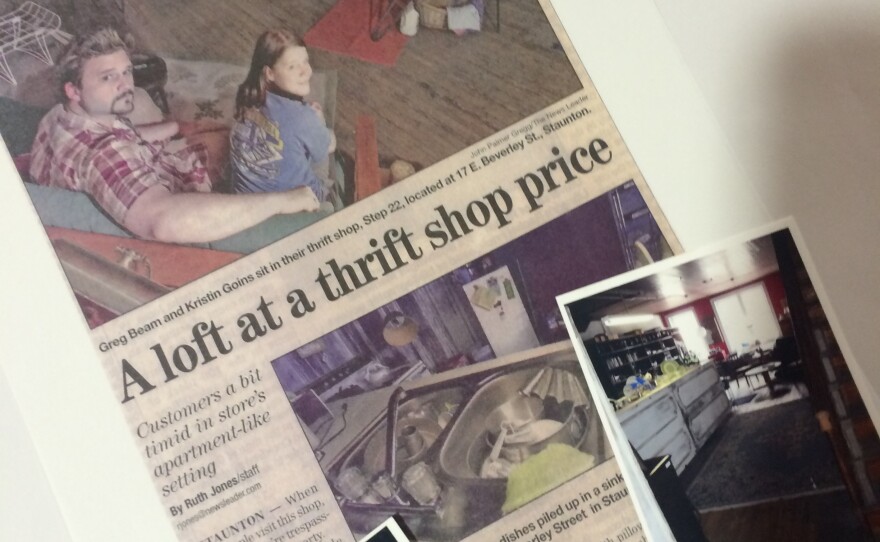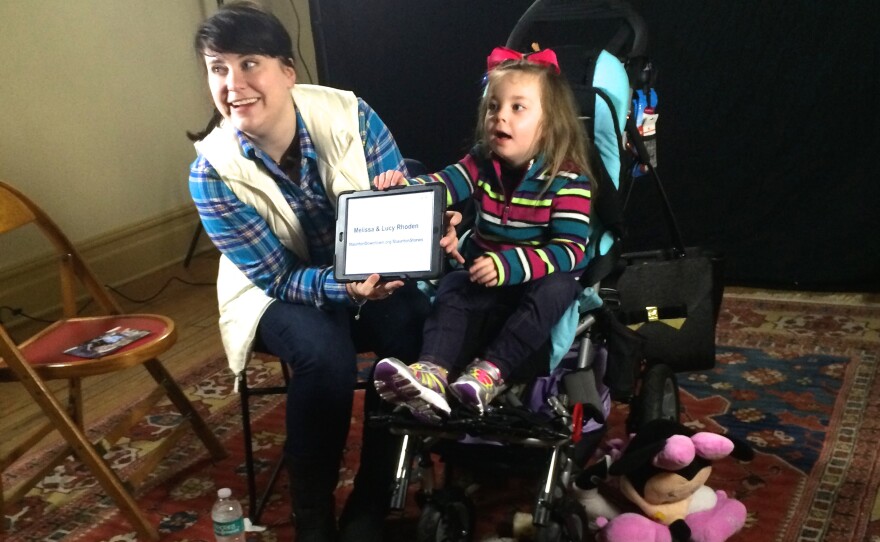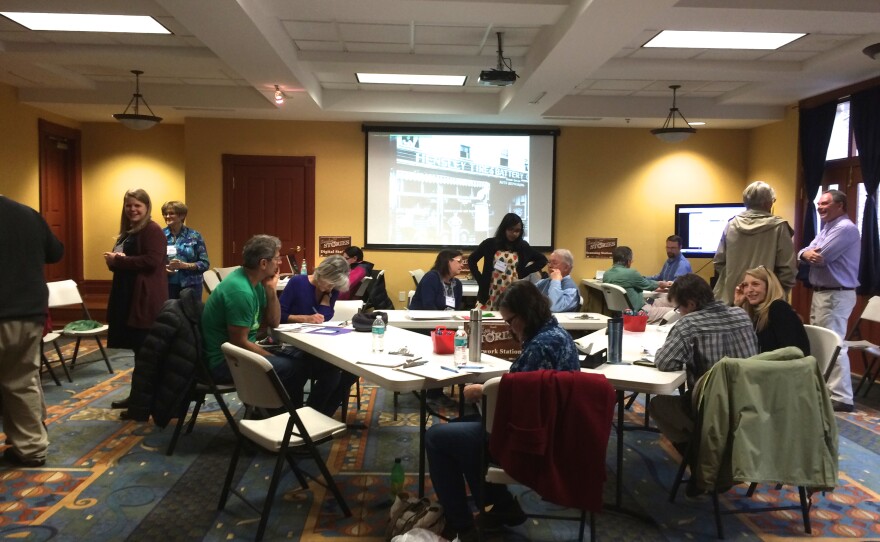How do you capture a town’s “It” factor at any given moment in time? Planners in Staunton came up with a clever idea. Think, Antiques Roadshow dosed with ample civic pride. Staunton residents braved the cold and snow on the last day of winter and offered all sorts of interesting, quirky, momentous Staunton memorabilia — providing a sort of “scrapbook of the community.” WMRA’s Jessie Knadler was there.
One hundred years from now, amateur historians in Staunton aren’t going to have to dig too deep to discover just how quirky and interesting their town was in the year 2016.
[sounds from Staunton Stories participants]
At least, that’s the hope behind Staunton Stories, a one-day event that took place over the weekend at the R.R. Smith Center downtown. Staunton residents were invited to come out and show off their unique Staunton memorabilia: photographs, documents, artifacts—items not already part of the historical record. In fact, the more obscure and unknown, the better.
JULIE MARKOWITZ: We did not prescreen the people who are coming and we love to open it to everyone.
Julie Markowitz is the executive director of the Staunton Downtown Development Association, or SDDA. Staunton Stories was a kick-off to the SDDA’s 20-year anniversary.
MARKOWITZ: What I’m hoping is that I’ll hear from some of the people that I’ve just never met before, that I don’t know already, don’t know their stories. And also we’re looking for people that, you know, neighborhood photographs, family photos, veterans, love letters, and people that have also contributed directly to downtown. Businesses that have come and gone or even businesses that are still around today.
One such business that has come and gone is Step 22, a thrift shop located on the second floor of 17 East Beverley. It was owned and operated by Greg Beam and his cousin Kristin Gaffney. Greg brought along a news article about the shop from the local paper from 2005.
GREG BEAM: What was unique about our shop is that it was set up to look like a loft apartment so it looked like you were shopping through someone’s apartment. We built a fake counter, fake sink, fake appliances. You would purchase dishes out of the sink or clothes out of the closet. We had a bed set up. You could buy linens off the bed, throw pillows off the sofa, buy art off the walls.
He also brought along notes customers from all over the country had left him and Kristin at the shop, comments about the uniqueness of the store’s concept.
BEAM: Hopefully, it’s an event that will catch on, become an annual event—okay, it’s March, it’s time for me to go have my photos and documents archived for future generations for other people to enjoy off the Internet, to know about these other stories. I think it’s a great beginning to this sort of scrapbook of our community in a way ….I just love that there’s no stipulations on the types of stories that we’re able to tell, or the types of items….you know, to someone else, these photos and news clippings of our shop, they mean a lot to us but they’re not necessarily historically significant but to us they mean something, shows that we were here.
MARKOWITZ: The stories which will be photographed and, you know, all the documents will be digitized and then of course we’ll have videos of people telling their stories, items that they’ve brought with them, will live on the SDDA website.
The SDDA is also planning an exhibit of the memorabilia in June.
About 45 people showed up to the inaugural event. The sleet and snow kept the event smaller than the SDDA had hoped, but determined residents still braved the elements.
Melissa Rhoden showed up with her three-year-old daughter Lucy, who is confined to a wheelchair because she suffers from DravetSyndrome, a severe pediatric epilepsy. The mother and daughter shared and recorded their role in helping to change Virginia’s medical marijuana laws for patients suffering from epilepsy. Melissa recorded their story on video and brought along photos of the experience.
MELISSA RHODEN: Do you know who this is? This is Lucy and the Governor of Virginia signing a bill for medical cannabis for people with intractable epilepsy….
For Melissa, Staunton Stories provided an opportunity to capture and record a pivotal moment in time for her and her family.







